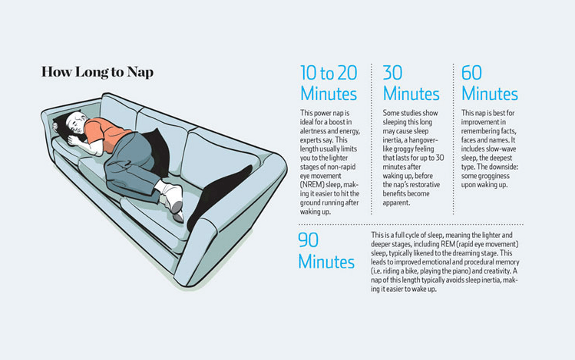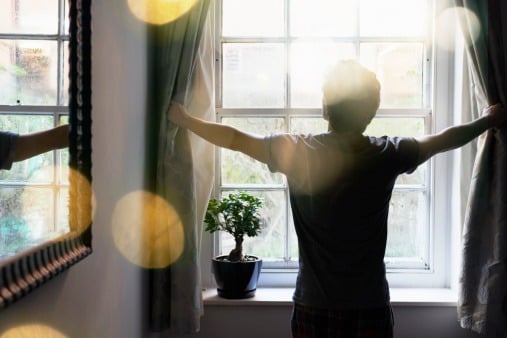Napping has proven to have numerous beneficial health qualities. It allows you to stay alert, can reduce stress, and allows you to become more productive as a result. However, there is a science to napping. Because our bodies go into various stages of consciousness and unconsciousness while sleeping, the duration of your nap is the true indicator of how you will feel once you awaken. Today, we will take a look at the art of napping, how it is beneficial for you, and if you are already an individual that naps, but still feel groggy when you wake up, we will talk about how to end that feeling today.
The Art of Napping
Napping is all about a even combination of the right timing, location, and environment. These criterion are different for each individual, however for the most part there is a trend of the effects of certain aspects of these criterion. For example, we can first look at timing. Most individuals look to take a nap in the middle of the day. When it is much needed, during the work week, this means that nap timings are already constraint. However, this is also for good reason. a 10 – 20 minute nap is beneficial for these type of mid-day naps due to how you are able to rest without going through the full REM, or Rapid-Eye Movement, cycle.
This is the measure of going into waves of deep sleep and slight consciousness. After a certain period of time, usually 30 minutes, you begin to go into the deep sleep that results in grogginess when interrupted. This risk period passes after an hour and a half, which is the duration of a nap that goes through the full sleep cycle. If you have 90 minutes to spare, this could be your best option, otherwise, keep it between ten and twenty minutes.
The location is important because many individuals may find it difficult to go into a full sleep in an uncomfortable or unfamiliar place. If you find yourself having to nap in such a situation, take a familiar item like a blanket or pillow to try to make it more comfortable of a place to lay your head.
The Benefits of Napping
In a perfect world, we would be able to drop everything we are doing and sleep for eight hours a day and not have any consequences. In a perfect world, we would also be able to do everything we need to get done, sleep for three hours, and feel fine for the rest of the twenty-one hours of the day. Neither situations are possible and that’s where naps come in.
They allow you to make it through the day on the infrequent days you are unable to get a full nights rest of 7 to 8 hours. It allows you to reduce fatigue and be more alert for the rest of the day. Also, for those who wish to forgo coffee, a mid-afternoon nap is a great way to regain energy naturally, rather than from a coffee bean.
The Mistakes of Napping
One mistake associated with improper nap taking is oversleeping. As we mentioned above, you should either keep naps between 10 and 20 minutes or no longer than an hour and a half. Secondly, a huge mistake in napping is sporadically doing naps during random times of the day and week. Researchers find that with a nights rest, consistency is key and it’s important to go to bed at the same time every evening.
While this can be achievable for many, but a failure for a lot of other people, napping inconsistently will have you feeling the effects at a quicker rate. It throws your sleep schedule off whack and could result in a later night as well because your body may feel you are rested enough to last late into the night.
There are many misconceptions that come with taking a nap. We hope that this article allowed you to debunk some of them. Let us know in the comments below if you are an individual for or against daily naps.















































